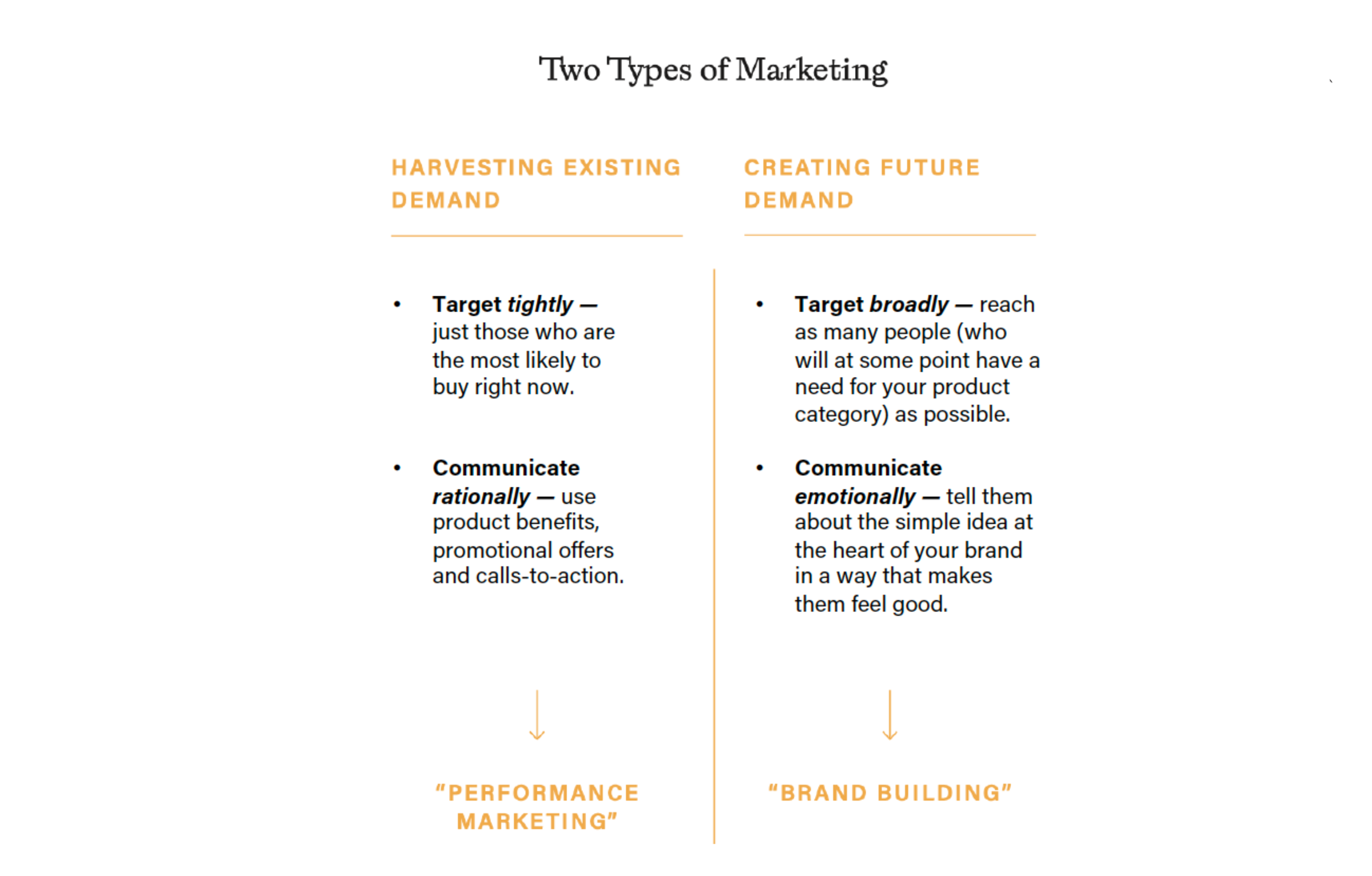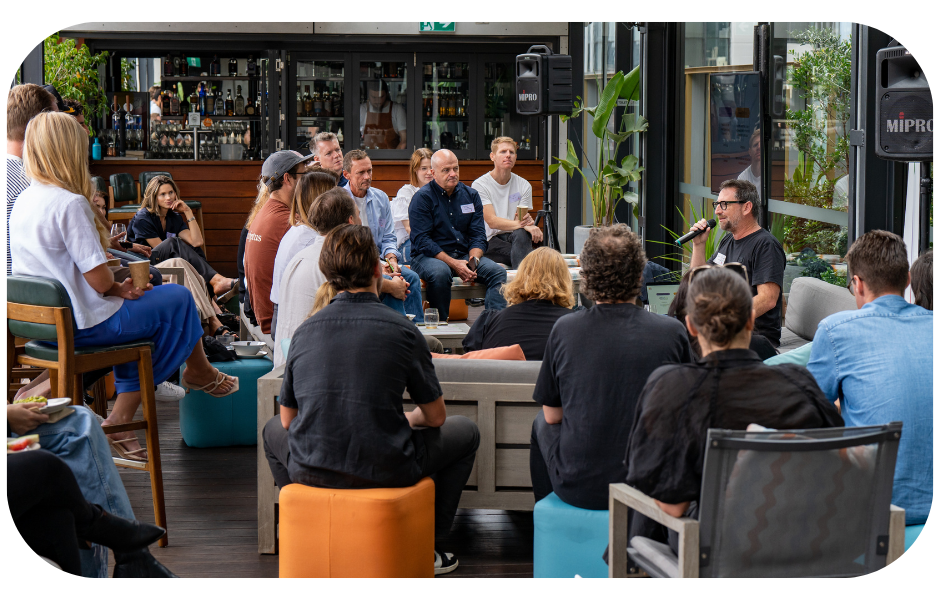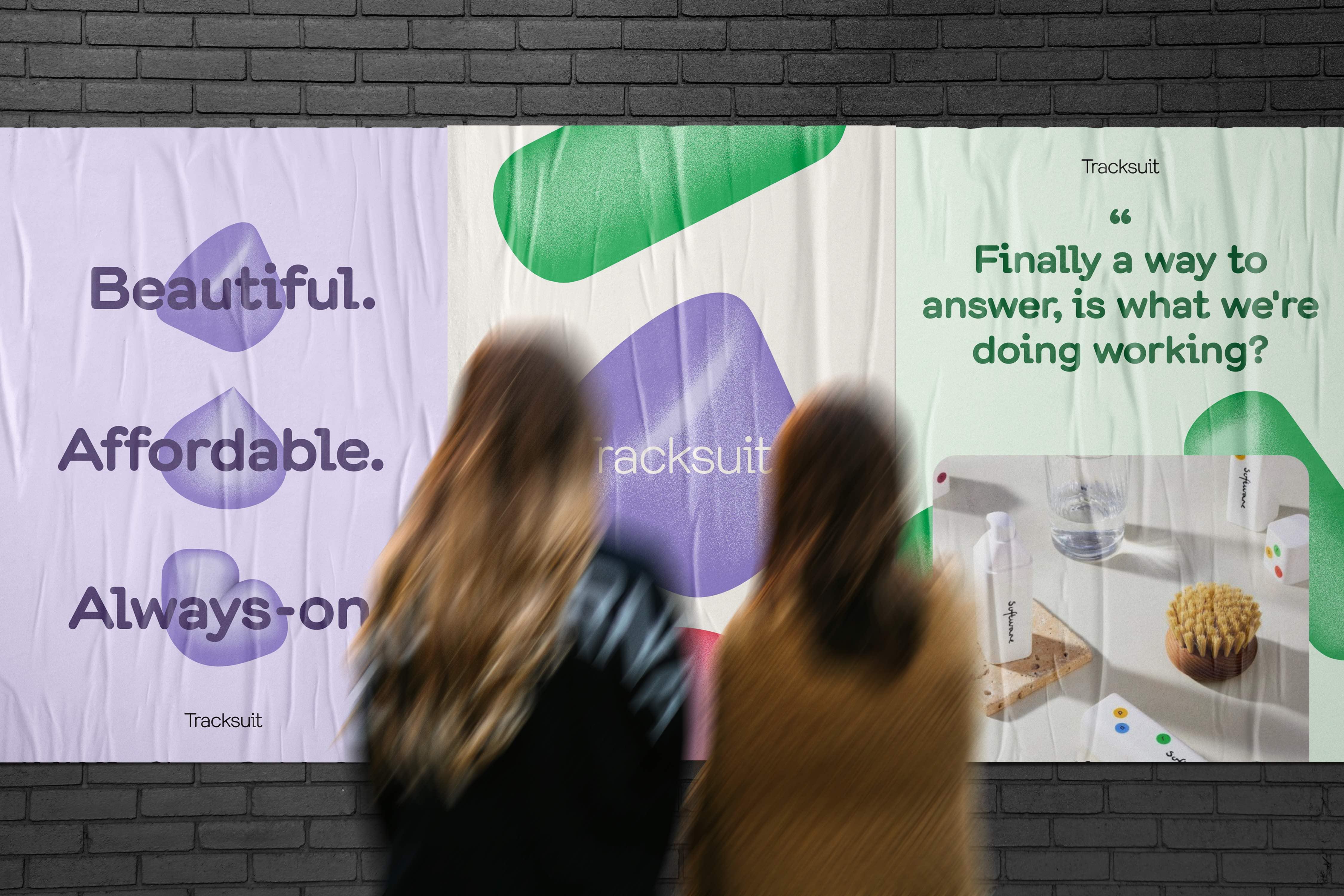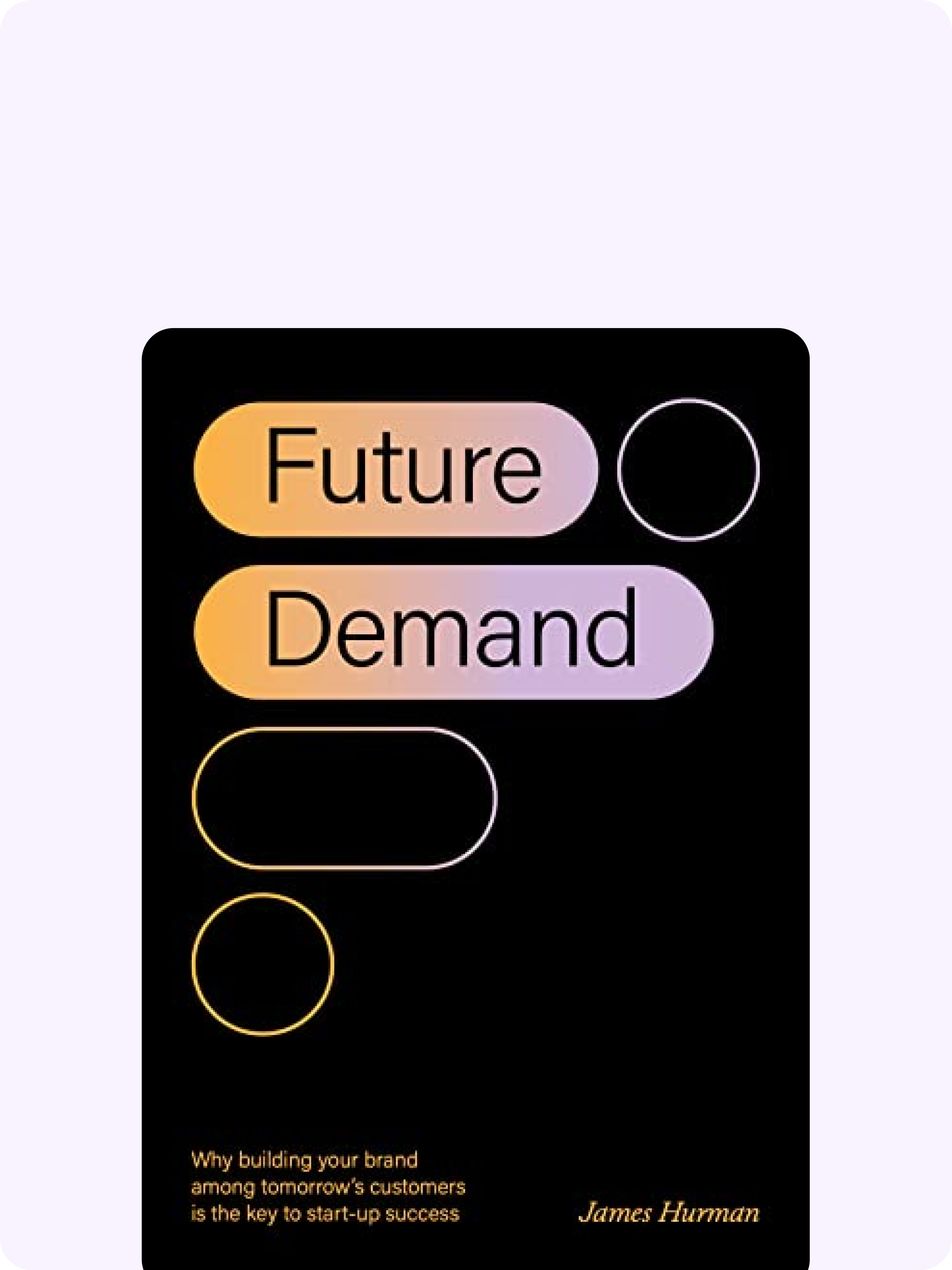How to market marketing: the key to getting buy-in from non-marketing stakeholders

We had an incredible time hanging out with Australia's best brand builders at our event, Building Brands of the Future. Guests took part in an intimate fireside chat with James HurmanOpens in new tab, who spoke about the importance of building a brand over the long-term and the Future Demand mental model. Here’s the key learnings from the event, as well as insight into the questions Australia’s best marketers were asking.

In an ironic twist of fate, marketers who are building epic brands tend to struggle with marketing marketing to their internal team.
While we’re great with external comms to our customers, getting that buy-in from internal stakeholders is often where we fall down.
It’s no wonder, really: as marketers, we like to use complicated, marketing-specific jargon (first and last touch-attribution, anyone?) we love getting incredibly granular about our methodology and metrics, and we’re frequently perceived as the ‘fun department’ of the business who colors in for a living.
The uphill battle is all too real. So, the question remains – how can marketers get their internal team on board so they can secure bigger budgets and more investment into the brilliant, creative strategies they want to execute?
Introducing Future DemandOpens in new tab, a mental model created by Tracksuit’s co-founder James Hurman. Future Demand is a simple concept that you can use to help non-marketing humans understand the importance of marketing, which creates demand with both the customers of today, and the customers of tomorrow.
Future Demand is a jargon-free way of summarizing the nuts and bolts of your marketing strategy to make it relevant to non-marketers.
Sign up to Shorts
For fortnightly brand insights, stories and goodness that'll help you win (we promise).
Building brands of the future for tomorrow’s customers 🚀
In any industry that sells any product or service, there are always two types of customers:
- Existing demand: the group of people who are in the market today, and ready to buy now.
- Future demand: The group of people who are not ready to buy right now, will be at some point in the future.
When crafting a marketing strategy, brands must target both groups with short-term conversion activity and long-term brand building or they’ll find themselves in a predicament where they’ve converted all of the existing demand and sales are slowing.
Another reason the Future Demand model works well for other stakeholders within a business is because it is a way for a brand to ensure growth sustainably over the long-term.
No CEO, CFO or other key stakeholder wants their sales to dip and customers to drop off. Future demand is an easy-to-understand way of linking your marketing strategy to everyone’s central goal: a business’s growth.
James Hurman says he’s already seen many examples of the Future Demand mental model helping non-marketing stakeholders ‘get’ it.
“It's been really welcomed by the start-up, VC and even the corporate community. And frequently by people who didn’t really understand or buy into brand being important before now. Which was the point – to introduce a way of thinking about brand that makes logical sense to people who aren’t as intuitively favorable toward brand marketing as marketers are,” James says.
“Future Demand has made it clear to non-marketing people that brand marketing is about capturing the customers of tomorrow, as opposed to being this seemingly unnecessary practice of giving today’s customers ‘good feels’ about our company.”
It’s worth noting that existing demand and future demand are measured in different ways. Existing demand will be measured through sales and click-through metrics, while future demand can be measured by brand health metrics like awareness, consideration and preference (which we track for you here at Tracksuit!)
If you’re keen to deep dive into this concept further, we’d recommend getting stuck into the bookOpens in new tab or watching this videoOpens in new tab
Future Demand for B2B 👔
How many consumers sit in the future demand and existing demand categories will depend on what industry you’re in. For example, The Ehrenberg Bass Institute for Marketing Science has found that in B2B, 95% of businesses are not in the market for a B2B product or service at any given time.
This is because purchases are less frequent – businesses might change software providers every couple of years, which is far less often than a coffee brand contending for a consumer’s daily coffee purchase.
This means that a B2B company’s marketing split could look like 95% of activity aimed at future demand, and 5% at existing demand.
But long-term brand building is also critical to B2C companies, too. Coffee purchases are frequent, which makes it a highly competitive industry – and brand is often the differentiator that turns a consumer from purchasing from one business to another.
Similarly, think of big-ticket purchases like a new car and how much research and consideration goes into them. Brand marketing is what evokes a sense of familiarity, excitement and trust in a particular type of car.
Ultimately, harvesting existing demand and building future demand are equally important to every product category.

If you’re a B2C brand that’s interested in learning what the best short-term and long-term budget split for your business is, we’d recommend using our Brand Budget Calculator
Based on the research of industry legends Peter Field and Les Binet, it tells you how much of your spend should be going towards each.
More on best practice brand strategy 🔥
At our Sydney event, Building Brands of the Future, we got a bunch of Australia’s best marketers in the room to talk about the challenges and opportunities that come with building a brand. James Hurman was also our guest speaker. Here are some of the questions that were fired James’ way from our guests, and his responses.

Q: How do you bring brand into short-term, performance marketing?
James: Firstly, it’s useful to remember that harvesting existing demand and creating future demand require two very different kinds of marketing and advertising. To harvest existing demand, we use performance marketing and we need to target (as best we can) the people most likely to be in the market and ready to buy today. And we need to communicate what they want and need to help them make a decision – which is rational stuff like product information, features, benefits and pricing, along with calls to action.
To create future demand, we use brand marketing and we need to target very broadly to include anyone who may come into the category at some point in the future. They have no need for lots of rational information or calls to action, as they’re not ready to buy – our job is to make them remember us and feel good about us, so that when they come into the market, they gravitate toward us.
Trying to do both of those things in one ad or piece of marketing is proven to be much less effective than splitting out those jobs and doing them with separate executions. However, those separate executions don’t need to be completely unrelated to one another. Use the same brand or campaign visual design or perhaps the same brand tagline or ‘distinctive assets’. So that the two different layers of communication feel as if they’re from the same family. When people see our performance marketing, we want them to be reminded of the brand marketing that made them feel good.

Q: How do you maximize a brand play when you don’t have hundreds of thousands of dollars? How do you make it go far without any budget?
James:Firstly, the hard truth is that there’s no substitute for spending money. Yes, occasionally we’ll be able to do something cheap or free which gets a lot of attention. But that’s always temporary and brand building is not a ‘once in a while’ job.
Brands are best built when they’re in market consistently. The effects of brand building compound (i.e. get better) over time when brand comms are consistently delivered and ‘always on’. That’s not necessarily about spending a lot of money – it’s more about taking the budget we have for the year, dividing it by 12, and spending that much each month reaching as many people as we can with the money we have. And being consistent with our brand messaging and creative is key – we want to create one campaign or platform and then run that long and then leave it there for a long time (a year or more).
Again, that’s a very different discipline from performance marketing, which is about trying new things every day, putting different offers in market, reacting to what’s going on, upweighting during important retail periods, and more.
Think of it like investing. Brand building is like a long-term strategic investment. The kind of investing that has made Warren Buffet one of the richest people and most successful investors of all time. He buys a good asset, then holds it for decades. Performance marketing is like day-trading. Continually buying and selling shares, reacting to the market, and trying to ride the ups and avoid the downs.
Establish two layers of comms – brand and performance – then ‘Warren Buffet’ your brand layer and ‘day-trade’ your performance layer. Then, once that’s all in place, it’s great to go for campaigns and ideas that will spread further than their budget. When we pursue more creative, original, interesting, topical or provocative campaigns, they’re more likely to ‘earn’ attention – be shared on social media and written about by the media. This shouldn’t be thought of as a replacement for adequate spend though – it’s an amplifier of adequate spend.

Q: What should a brand do to come back from reputational damage and how long does it usually take? E.g. the recent cases of GilletteOpens in new tab and QantasOpens in new tab
James: I think we fret far too much about reputational damage. For all the millions of campaigns run each year around the world, very, very few ever result in any damage to a brand. But most of that billions of dollars of annual marketing spend is completely ignored because it’s so bland, and that’s the much bigger jeopardy. I don’t necessarily agree that literally all publicity is good publicity. But it’s definitely true that almost all publicity is good publicity. As marketers, we should be seeking to get attention, not seeking to avoid any chance of negative attention.
But there are obviously some examples of ads that didn’t land well. Gillette’s experiment with a much-too-woke campaign turned a lot of guys off – but while Gillette didn’t have the best year commercially, its sales only declined 1% and it’s far from clear that the drop was in any way related to the ad. The reality is that if we want to make cut-through comms, we’re going to get it a little bit wrong sometimes. And again, it’s far better to be a brand that’s getting a lot of attention and sometimes that’s negative, than a brand that’s getting little or no attention, negative or positive. The latter is a far larger marketing failure.
The Qantas example is very different. It was nothing to do with advertising or marketing. It was all to do with the customer service experience, which failed on multiple fronts – while the company received $2 billion in taxpayer funds during Covid-19 and paid out huge bonuses to its executives while pilots and engineers went underpaid. It smacked of greed amid a total lack of concern for staff and customers. Obviously that kind of behavior is going to damage a brand.
The question is whether a problem like that can be solved with marketing. Certainly, it can’t be solved by marketing alone. In Qantas’ case, they needed to address their fundamental operating issues and get back to a service experience that Australians could feel confident in and proud of. Then, and only then, can marketing become useful in communicating the positive changes that are happening. Qantas is a good reminder that ‘brand’ is not just ads and marketing. It’s everything a company does. And no amount of great marketing will ever make up for a company failing its customers on the basics.
The truth is that brands, like people, make mistakes. And the best way to think through how to recover is by imagining what you’d do as a person if you made a similar mistake. The steps are usually pretty straight forward – you’d take responsibility, apologize, be clear about what you’re going to do to fix it, what you’ve learned, and what changes you’ll make so that it doesn’t happen again. Then you’d put words into action, make the changes and earn back peoples’ trust.
Side note: It’s worth noting that the questions here are taught in the course material of James’ excellent program, Masters of Advertising EffectivenessOpens in new tab. If you’re interested in getting first dibs at the next cohort, shoot through an email to mikayla@gotracksuit.com.
The finishing line 🏁
We hope the Future Demand concept helps you create a case for more (or maintained!) marketing investment within your business.
The struggle is real when it comes to getting all key stakeholders to back the marketing team, but if you can connect your strategy to the long-term growth of the business, you’ll have a shot at success.
Interested in attending Tracksuit’s next event? We might have something in the pipeline – keep an eye on our channels for announcements 👀








